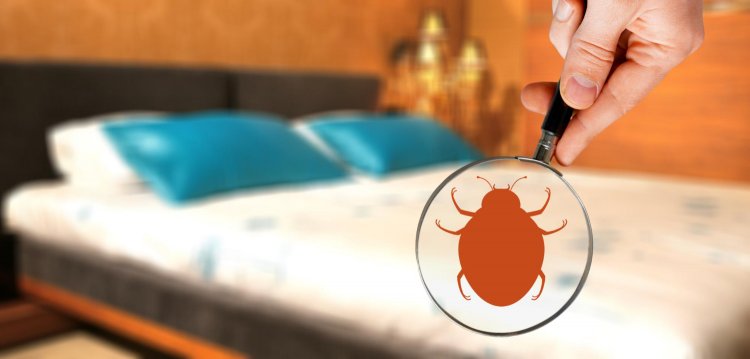Bed Bug Infestations: From Detection to Eradication
Bed bugs, scientifically referred to as Cimex lectularius, are small, wingless insects that feed exclusively on the blood of humans and animals. Despite their minute size, these parasites can cause significant discomfort and annoyance through their bites. This guide aims to delve deeply into the intricate world of bed bugs, covering various aspects such as their biology, behavior, identification, symptoms of bites, treatment options, prevention strategies, and common inquiries associated with these pests.

Understanding Bed Bugs: Biology and Behavior
Bed bugs are flat, oval-shaped insects with a reddish-brown hue, typically measuring about the size of an apple seed when fully grown. They possess six legs and are adept at hiding in cracks, crevices, and other tight spaces close to their human hosts. While they do not possess wings, bed bugs are proficient crawlers, allowing them to move swiftly across surfaces. These nocturnal creatures emerge from their hiding spots primarily at night to feed on the blood of sleeping individuals, using their elongated mouthparts to pierce the skin and extract blood.
Identification and Detection
Identifying a bed bug infestation involves recognizing various telltale signs. These include the presence of live bed bugs, shed exoskeletons, small reddish or rust-colored stains on bedding or furniture (indicative of bed bug excrement), and a distinct sweet, musty odor emanating from infested areas. Additionally, bed bug bites can provide crucial evidence of an infestation, often appearing as itchy, raised bumps on the skin, commonly occurring in clusters or linear patterns.
Symptoms of Bed Bug Bites
Bed bug bites typically manifest as small, red welts on the skin, accompanied by itching and irritation. While reactions to bed bug bites vary among individuals, some may experience more severe symptoms such as swelling, blistering, or even an allergic reaction known as anaphylaxis in rare cases. It is essential to refrain from scratching the bites excessively to prevent secondary infections and complications.
Treatment Options
Managing bed bug bites involves several approaches aimed at alleviating symptoms and promoting healing. Basic measures include washing the affected area with soap and water to reduce itching and applying topical anti-itch creams or calamine lotion. For more severe reactions, oral antihistamines or corticosteroid creams may be recommended by healthcare professionals to relieve inflammation and discomfort.
Prevention Strategies
Preventing bed bug infestations requires a multifaceted approach encompassing vigilant inspection, cleanliness, and proactive measures. Regularly inspecting living spaces for signs of bed bugs, reducing clutter, sealing cracks and crevices, and using protective mattress encasements can help mitigate the risk of infestation. When traveling, inspecting hotel rooms and avoiding bringing secondhand furniture or clothing of unknown origin into the home can also minimize the likelihood of encountering bed bugs.
Dealing with Infestations
Addressing a bed bug infestation necessitates thoroughness and persistence. While DIY methods such as vacuuming, steam cleaning, and laundering bedding and clothing can help reduce bed bug populations, professional extermination services may be required for severe infestations. Continuous monitoring and follow-up treatments are essential to ensure complete eradication of bed bugs from the environment.
In conclusion, while bed bugs and their bites can pose challenges and discomfort, understanding their behavior, identifying signs of infestation, and implementing effective prevention and treatment strategies can empower individuals to combat these pests successfully. By adopting proactive measures and seeking appropriate assistance when needed, individuals can regain control over their living spaces and mitigate the impact of bed bug infestations.
#BedBugs #InfestationDetection #Symptoms #TreatmentOptions #PreventionStrategies #InfestationManagement #PestControl #HomeCare #HealthTips #PublicHealth
Disclaimer:
The information provided in this article is for educational purposes only and should not be considered medical advice. If you have any health concerns or are experiencing symptoms, it is important to consult with a healthcare professional, such as a doctor or clinic, for proper diagnosis and treatment. Always seek the advice of your doctor or other qualified health provider with any questions you may have regarding a medical condition. Do not disregard professional medical advice or delay in seeking it because of something you have read in this article.
What's Your Reaction?





















